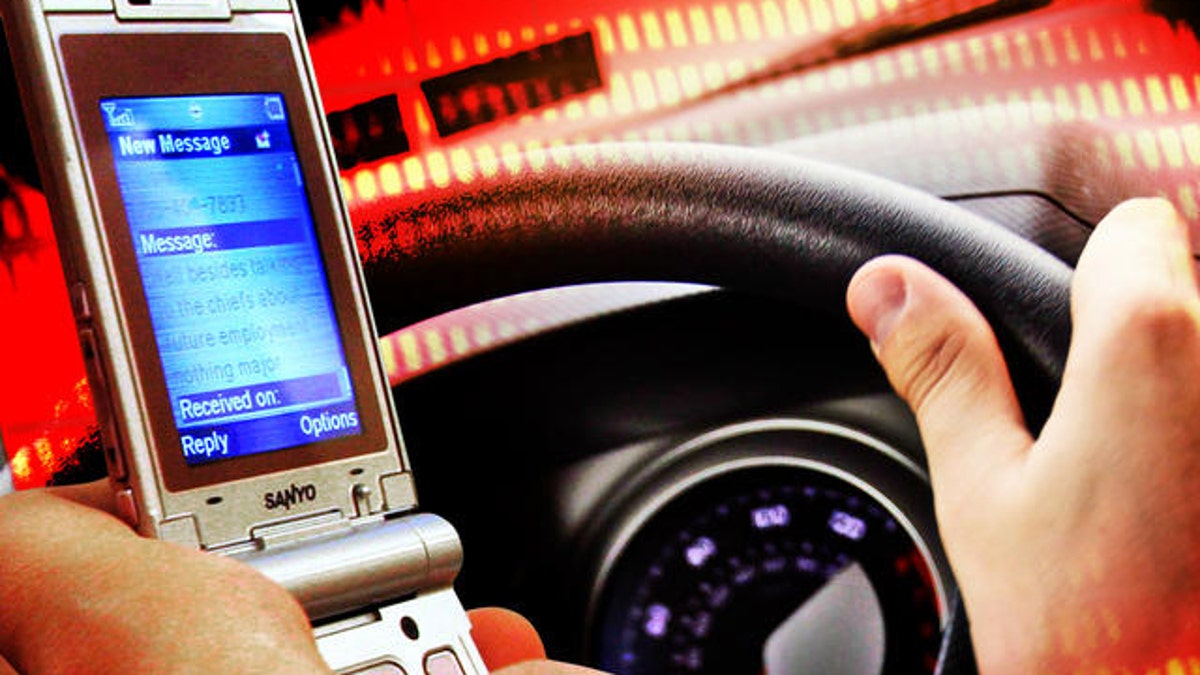
Feb. 22, 2008: Megan Verbeck, St. Louis, checks her phone for a new text message while working on projects at Ellis Library at the University of Missouri. (AP)
A comprehensive study on distracted driving has found there is no conclusive evidence that hands-free cell phone use while driving is any less risky than hand-held cell phone use.
The study, which was commissioned by the non-profit Governors Highway Safety Association, and funded by State Farm Insurance, also found that there is no evidence that cell phone or texting bans have reduced crashes.
The findings come after nine states have imposed bans on hand-held cell phone use while driving, and 34 states have imposed texting bans for drivers behind the wheel. Despite the findings, The Governors Highway Safety Association does not recommend that restrictions on cell phone use or texting be lifted in any of the states where they presently exist.
But it does recommend that those 41 states which don't ban talking on a cell phone hold off on enacting new legislation.
The study offers often contradictory findings. For example, it found that drivers are frequently distracted by any number of factors ranging from eating, to talking to texting, perhaps as much as 50 percent of the time they spend behind the wheel.
But it also found that drivers adapt by paying more attention to driving -- and less to distractions -- when the road risk level increases. It also found that states should enforce existing distracted driving laws, but should consider that such enforcement takes away from other traffic enforcement efforts.
The study also documents the proliferation of cell phone use and texting among American motorists.
It found two-thirds of all motorists reported using a cell phone while driving, about one-third of them routinely. It also found that one-eighth of all drivers reported texting while driving, although observational studies during the daylight hours in 2009, show that only 1 percent of all drivers were observed to be texting.
The authors make a number of recommendations including enacting a total ban of cell phone use for novice drivers, as well as texting bans for all drivers.
It also suggests that greater use of highway engineering solutions, such as rumble strips and automotive technological innovations can reduce distracted driving accidents.




